Africa: West and Central - Food and nutrition crisis in Sahel
Posted by Ricardo Marcenaro | Posted in Africa: West and Central - Food and nutrition crisis in Sahel | Posted on 17:06
Food and nutrition crisis in Sahel region of Africa
A potentially
catastrophic food crisis in the Sahel region of West and Central Africa
could affect as many as one million children. The food and nutrition
crisis resulting from a severe drought, threatens the survival of an
entire generation of children. Those children in eight countries -
Burkina Faso, Chad, Mali, Mauritania and Niger, Cameroon, Nigeria and
Senegal - are at risk of severe acute malnutrition. Sparse rainfall,
poor harvests and rising food prices have left many vulnerable and weak,
seeking medical attention. Sahel is one of the poorest regions in the
world where children already face daunting odds of survival. The
current crisis makes their survival even more tenuous. Associated Press
photographer, Ben Curtis, documented the conditions in the region. -- Paula Nelson (EDITORS NOTE: We will not be posting Monday, May 14) (32 photos total)

A
woman carries her child amidst dusty winds in the desert near Mondo, a
village in the Sahel belt of Chad, April 19, 2012. UNICEF estimates that
127,000 children under the age of 5 in Chad's Sahel belt will require
lifesaving treatment for severe acute malnutrition this year, with an
estimated 1 million expected throughout the wider Sahel region of West
and Central Africa in the countries of Niger, Nigeria, Mali, Chad,
Burkina Faso, Cameroon, Senegal and Mauritania. (Ben Curtis/Associated
Press)

A
donkey lies partially covered by the wind-swept sand in an area of
desert where villagers take dead animals to avoid the smell and
potential for the spread of disease, near the village of Dala in the
Sahel belt of Chad. Mothers with hungry and malnourished children are
flocking to feeding sites and clinics in the Chadian desert by any means
they can and where it is sometimes too late to save their babies'
lives. Health and U.N. officials warn that more children will die if
international humanitarian assistance is not increased. (Ben
Curtis/Associated Press)

Mother
Fatime Abd Rahmane, 22, and her daughter Kaltouma Abdoulaye, 23 months
old, recovering from severe malnutrition in the intensive care tent of a
clinic in Mondo, April 19, 2012. UNICEF says the current food and
nutrition crisis stems from scarce rainfalls in 2011, which caused poor
harvests and livestock production, though the situation in Chad has also
been exacerbated by an influx of Chadians returning from Libya as a
result of the conflict there. (Ben Curtis/Associated Press)
 Zara
Mahamat, suffering from malnutrition, diarrhea and fever, receives
treatment through a nasal feeding tube accompanied by her mother, in an
intensive care tent at the hospital in N'Gouri, a desert village in the
Sahel belt of Chad. Mothers with hungry and malnourished children are
flocking to feeding sites and clinics in the Chadian desert by any means
they can. It is sometimes too late to save their babies' lives,
however. Health and U.N. officials warn that more children will die if
international humanitarian assistance is not increased. (Ben
Curtis/Associated Press)
Zara
Mahamat, suffering from malnutrition, diarrhea and fever, receives
treatment through a nasal feeding tube accompanied by her mother, in an
intensive care tent at the hospital in N'Gouri, a desert village in the
Sahel belt of Chad. Mothers with hungry and malnourished children are
flocking to feeding sites and clinics in the Chadian desert by any means
they can. It is sometimes too late to save their babies' lives,
however. Health and U.N. officials warn that more children will die if
international humanitarian assistance is not increased. (Ben
Curtis/Associated Press) Mothers
wait for their children to be examined for signs of malnutrition at a
walk-in nutrition clinic in Barrah, a desert village in the Sahel belt
of Chad, April 20, 2012. (Ben Curtis/Associated Press)
Mothers
wait for their children to be examined for signs of malnutrition at a
walk-in nutrition clinic in Barrah, a desert village in the Sahel belt
of Chad, April 20, 2012. (Ben Curtis/Associated Press)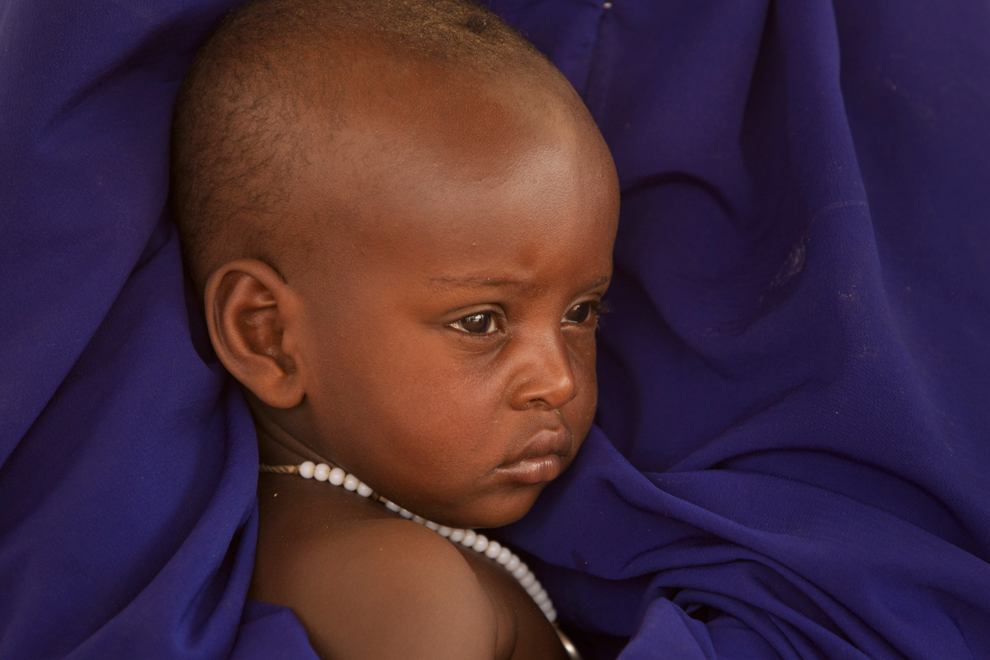
Mother
Hadetta Mohammed holds her son Omar Lamine, 2, as she waits for him to
be examined for signs of malnutrition at a walk-in nutrition clinic in
Barrah, April 20, 2012. UNICEF estimates that 127,000 children under age
five in Chad's Sahel belt will require lifesaving treatment for severe
acute malnutrition this year. (Ben Curtis/Associated Press)
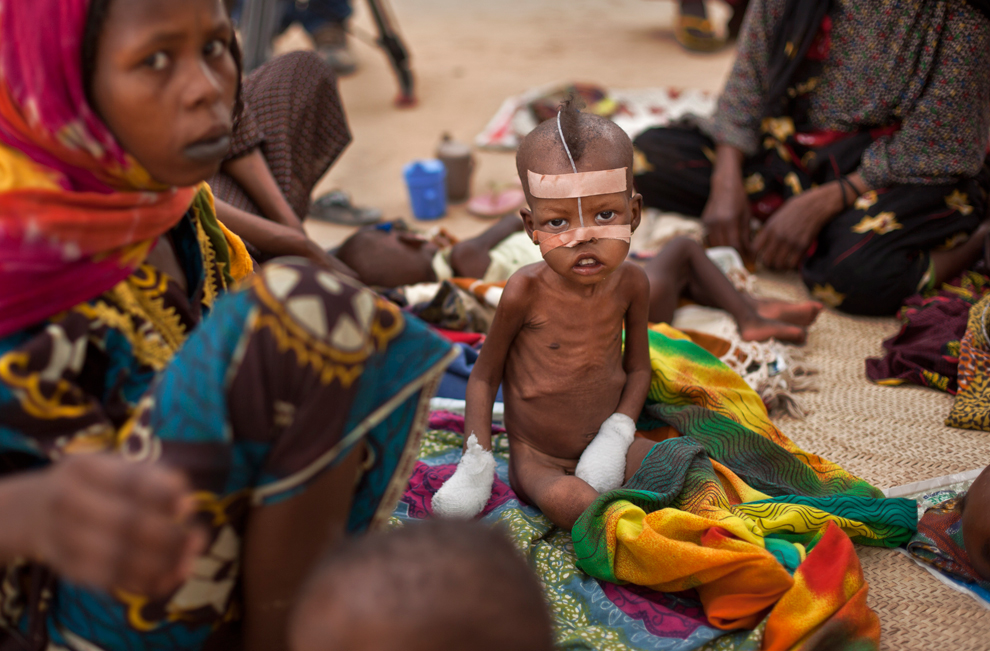
Halime
Moussa, 3, receives treatment via a nasal feeding tube. His hands are
bandaged to prevent him from removing the tube. He is being treated at
the therapeutic nutrition ward of the town's hospital. His mother,
Kaltouma Abakar, travelled 70km to reach the center, in Mao, capital of
the Kanem region of Chad. (Ben Curtis/Associated Press)

Kouboura
Ali, 8 months old, who is unable to accept food orally due to a
malnutrition-related illness, cries out as she receives an injection of
an antibiotic by a doctor in the intensive care tent at the hospital in
N'Gouri. (Ben Curtis/Associated Press)
 Mother
Ashta Abdoulaye, 20, holds her two year-old son, Moussa Ali, receives
treatment for severe malnutrition through a nasal feeding tube, April
19, 2012. (Ben Curtis/Associated Press)
Mother
Ashta Abdoulaye, 20, holds her two year-old son, Moussa Ali, receives
treatment for severe malnutrition through a nasal feeding tube, April
19, 2012. (Ben Curtis/Associated Press)
Mother
Hereta Moussa, 20, rests her hand on the leg of her son Mahamat
Choukou, 7 months, as he receives treatment for a malnutrition-related
lung infection at the therapeutic nutrition ward of the hospital in Mao,
capital of the Kanem region of Chad, April 17, 2012. (Ben
Curtis/Associated Press)
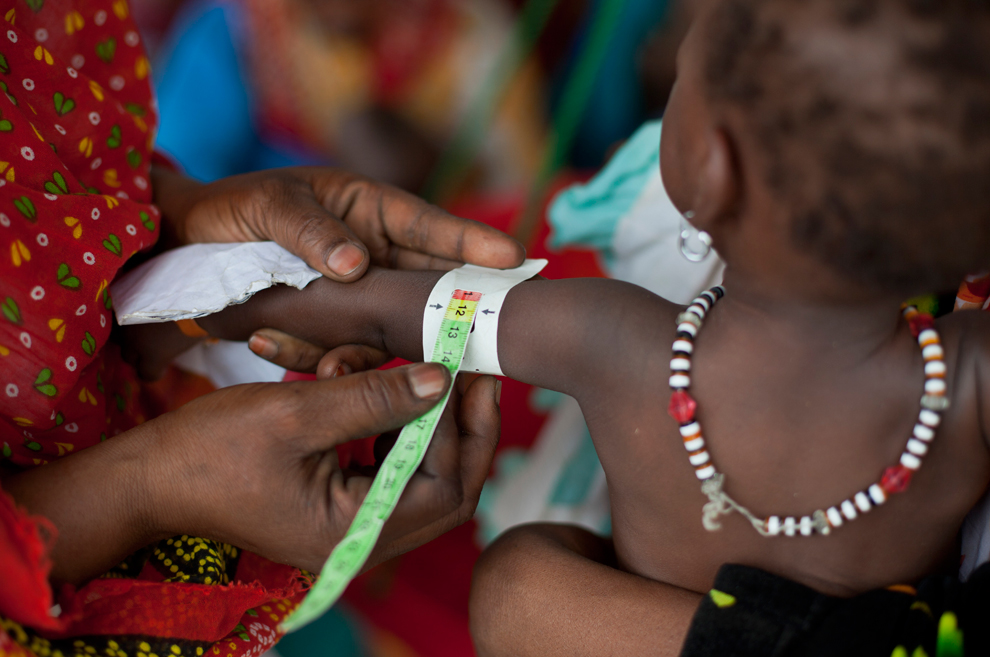
A
child's arm circumference is measured to check her growth, at a walk-in
feeding center in Mao, April 17, 2012. (Ben Curtis/Associated Press)
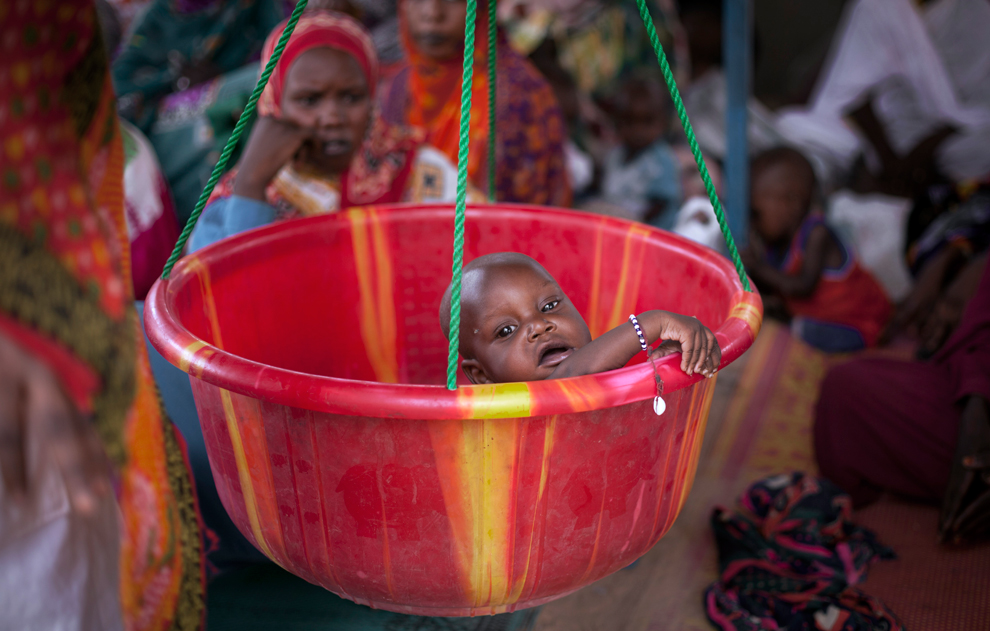
A
child is weighed as other mothers and children wait their turn, at a
walk-in feeding center in Mao, April 17, 2012. (Ben Curtis/Associated
Press)
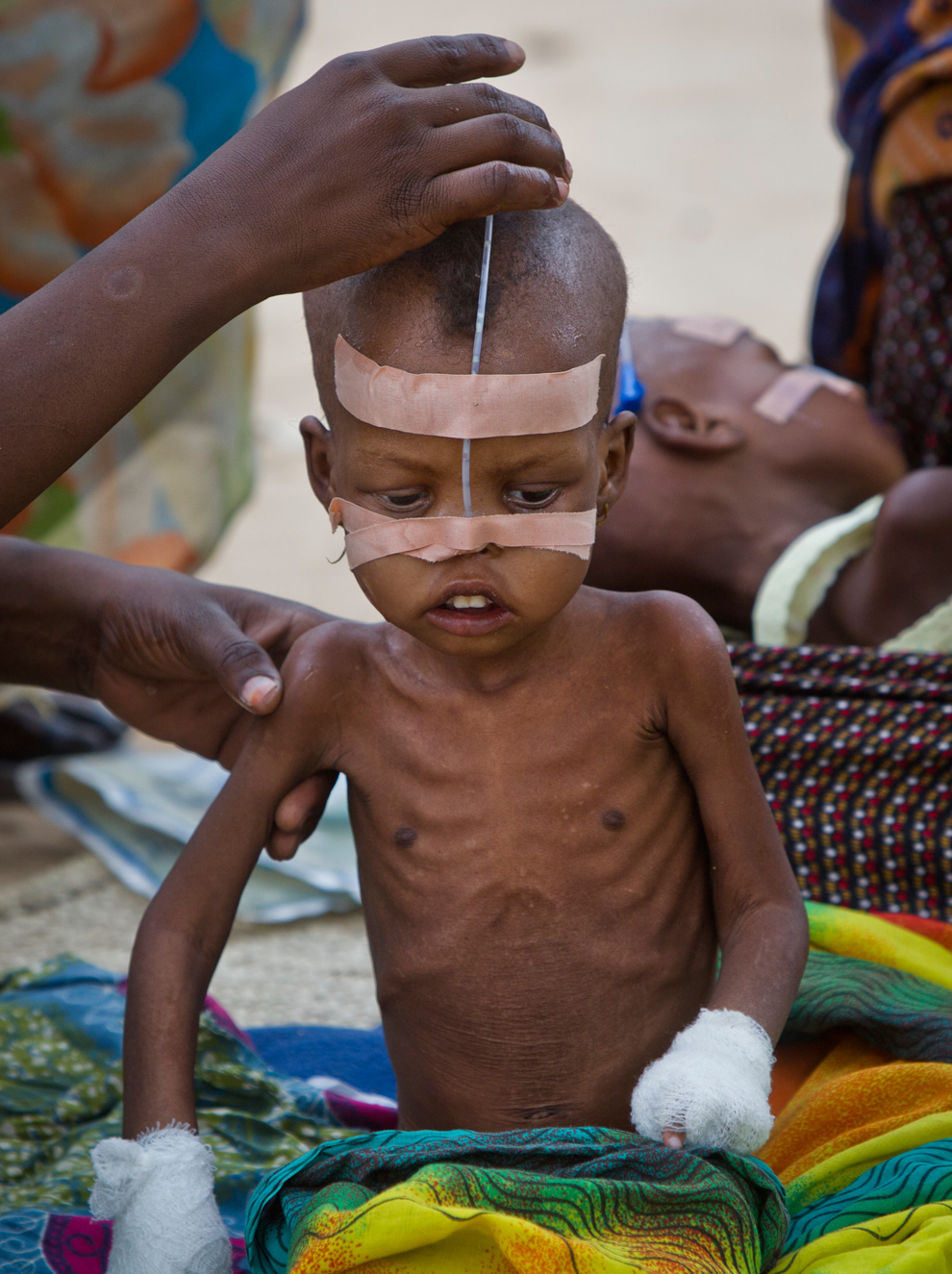
Halime
Moussa, 3, receives treatment via a nasal feeding tube, his hands
bandaged to prevent him from removing the tube, at the therapeutic
nutrition ward of the town's hospital, April 17, 2012. (Ben
Curtis/Associated Press)
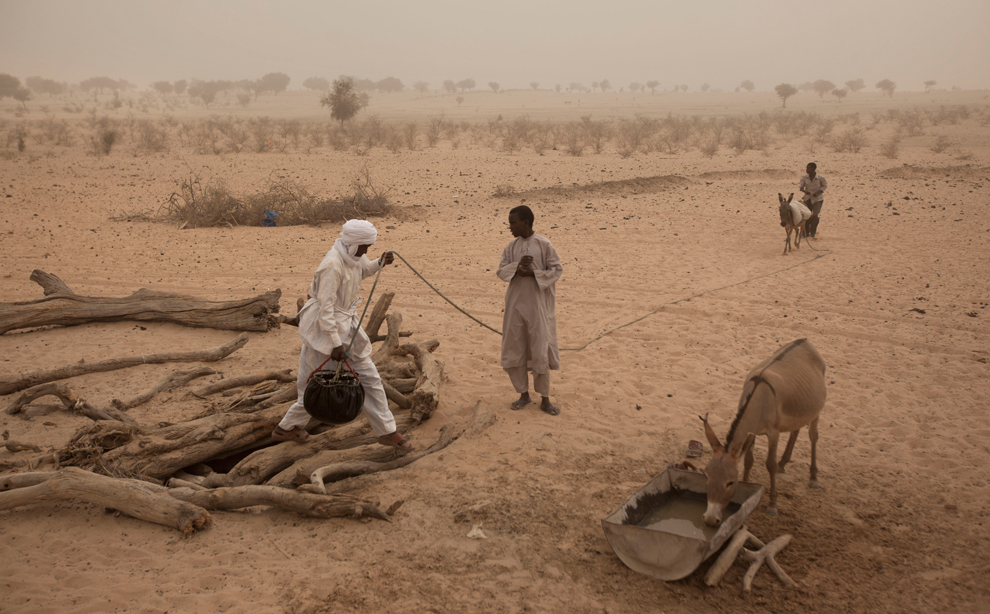
Chadian
men and boys use a donkey to pull up water, (the quality of which is
only suitable for animals to drink) from a well which took twenty men a
week to dig by hand, in a wadi near Tchyllah, a desert village in the
Sahel belt of Chad, April 19, 2012. (Ben Curtis/Associated Press)
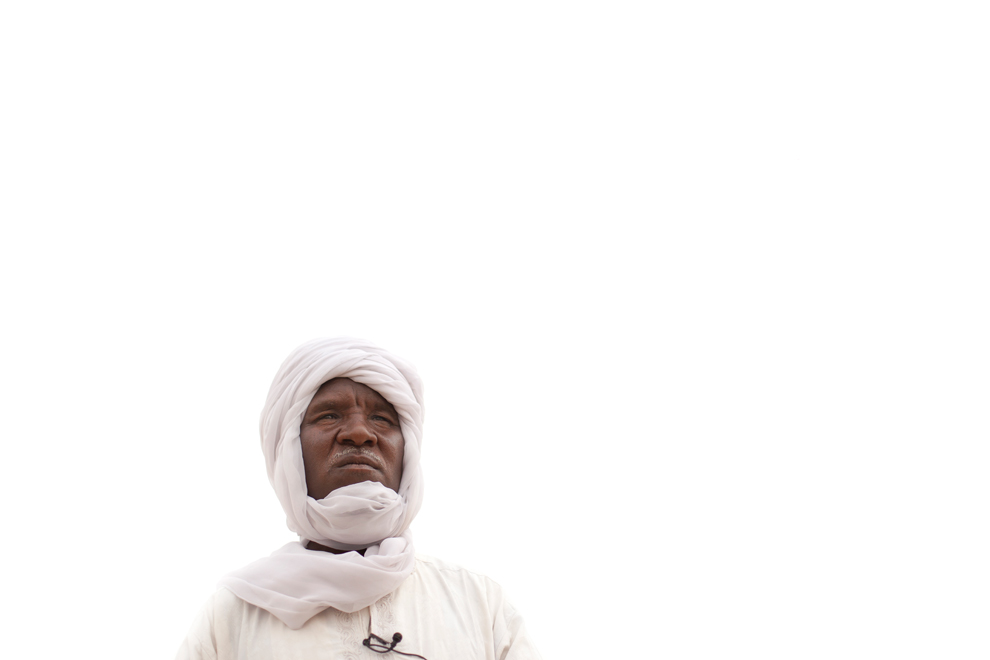
Hissaeni
Abdoulaye, 46, waits as his animals drink water from a well that took
twenty men a week to dig by hand, in a wadi near Tchyllah, a desert
village in the Sahel belt of Chad, April 19, 2012. (Ben
Curtis/Associated Press)
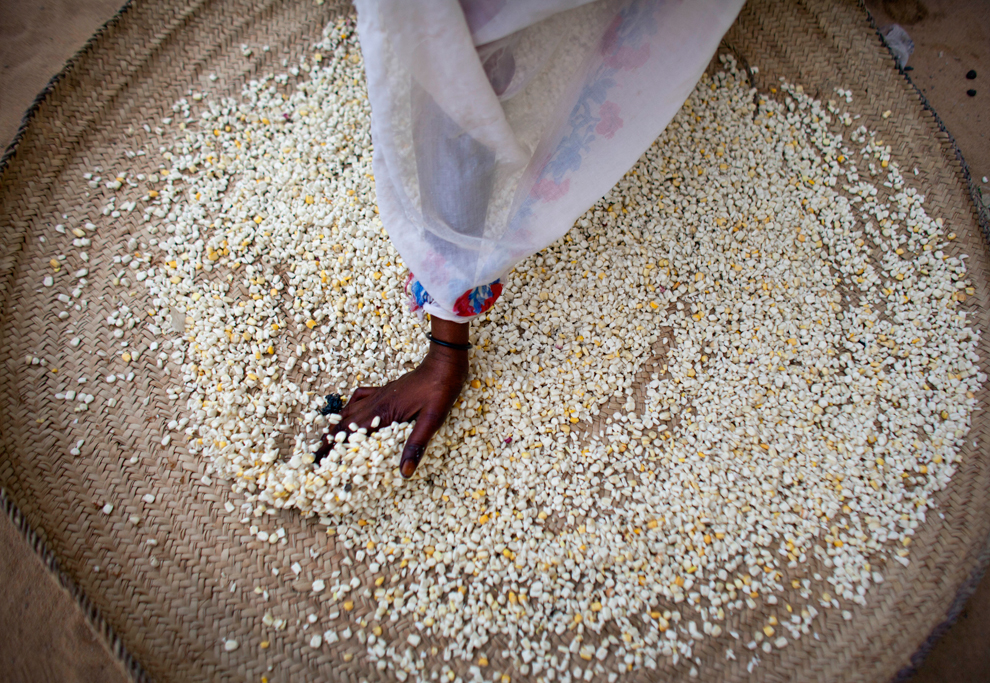
A
woman casts millet grain for sale into a basket next to a walk-in
feeding center in Mao, capital of the Kanem region of Chad. Mothers with
hungry and malnourished children are flocking to feeding sites and
clinics in the Chadian desert by any means they can. (Ben
Curtis/Associated Press)
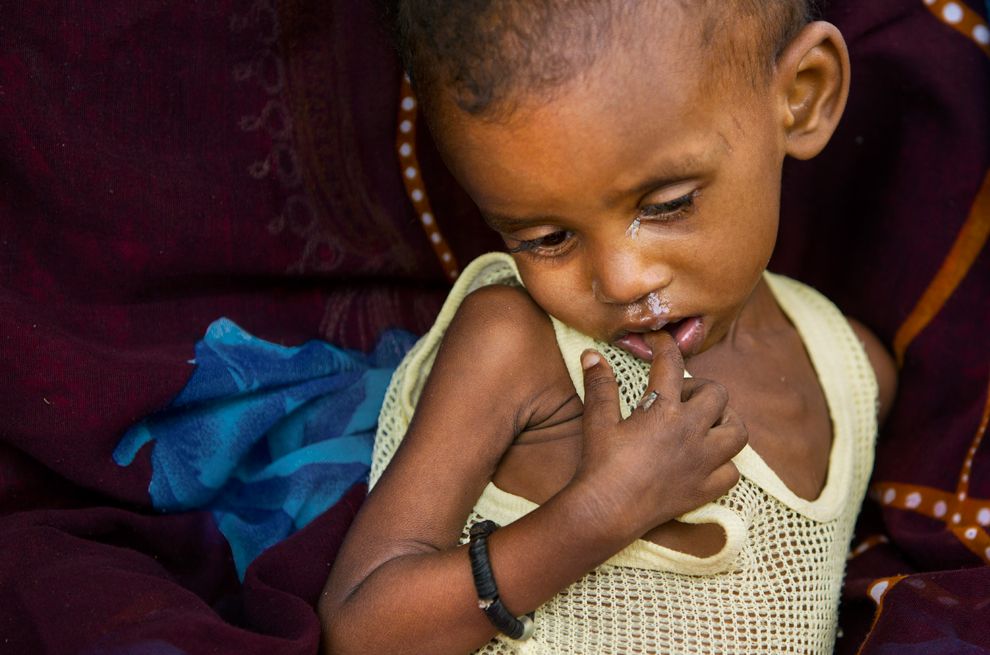
Hawa
Abdullah, 2, weighing 5.4 kg, sits in the lap of his grandmother who
now takes care of him after his mother (who lives in Darfur) was forced
to send him for medical treatment while she was pregnant with another
child and unable to make the long journey.(Ben Curtis/Associated Press)
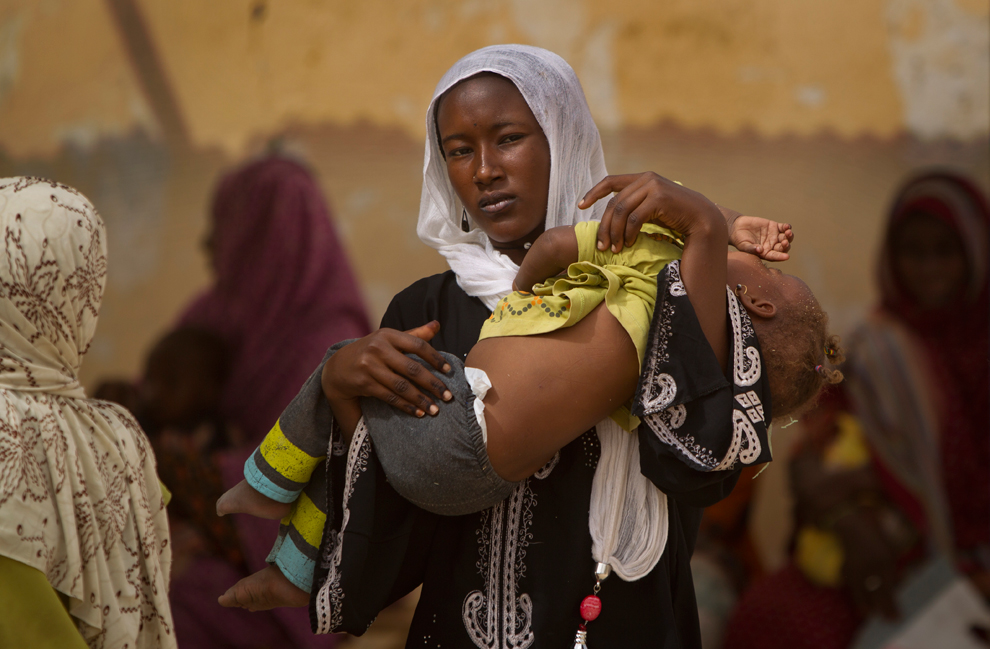
A
woman arrives with her child at a walk-in feeding center in Mao,
capital of the Kanem region of Chad, April 17, 2012. (Ben
Curtis/Associated Press)
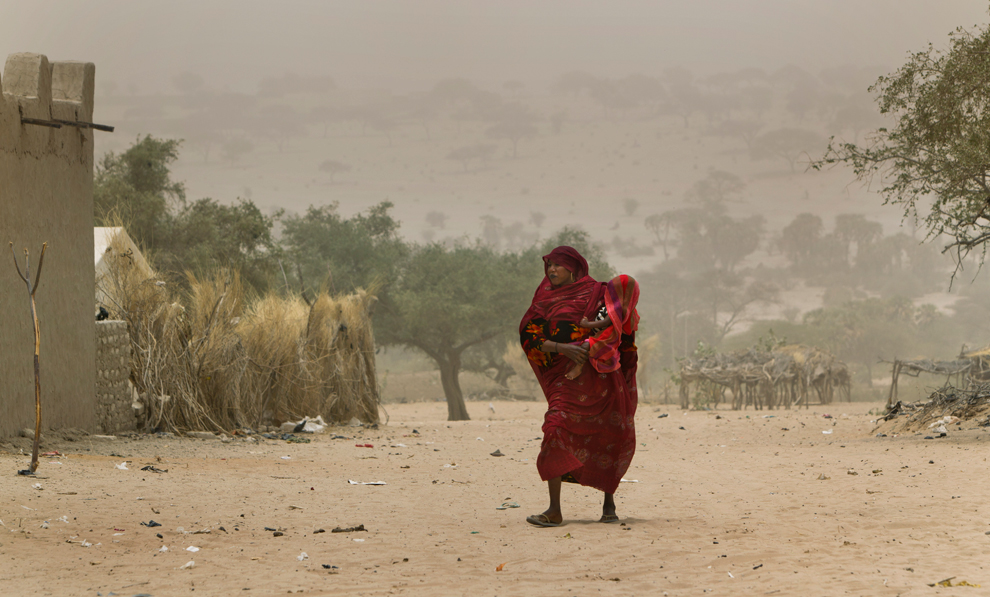
A
mother and her child walk to get water, pumped by hand from a well in
Mondo, April 19, 2012. UNICEF estimates that 127,000 children under 5
years of age, in Chad's Sahel belt will require lifesaving treatment for
severe acute malnutrition this year. (Ben Curtis/Associated Press)
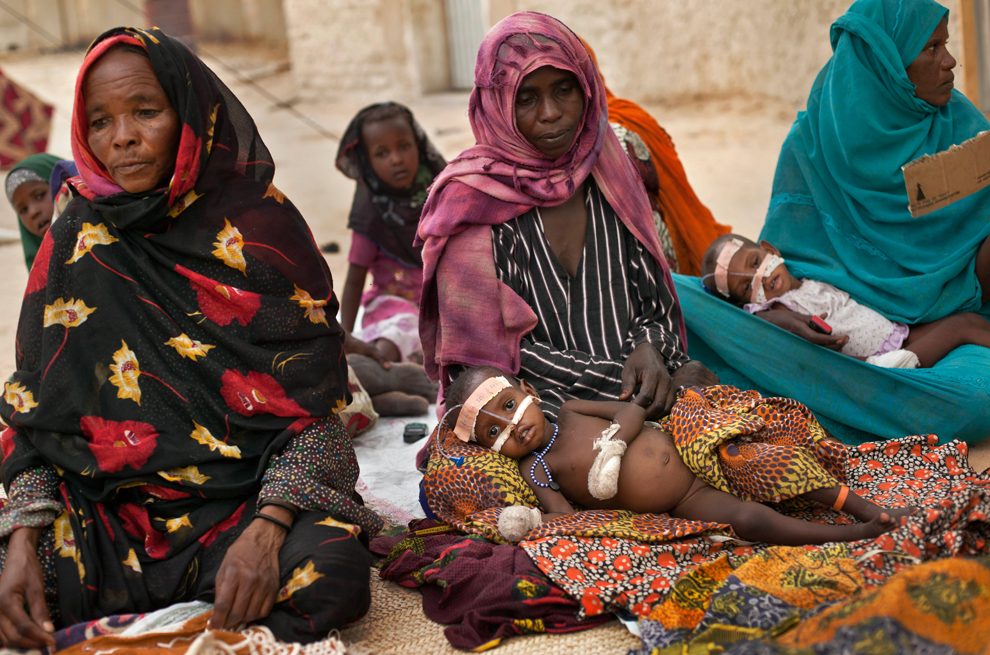
Nezile
Moussa, 2, receives treatment as he lies in the lap of his mother
Kouboura Adoum, at the therapeutic nutrition ward of the hospital in
Mao, April 17, 2012. (Ben Curtis/Associated Press)
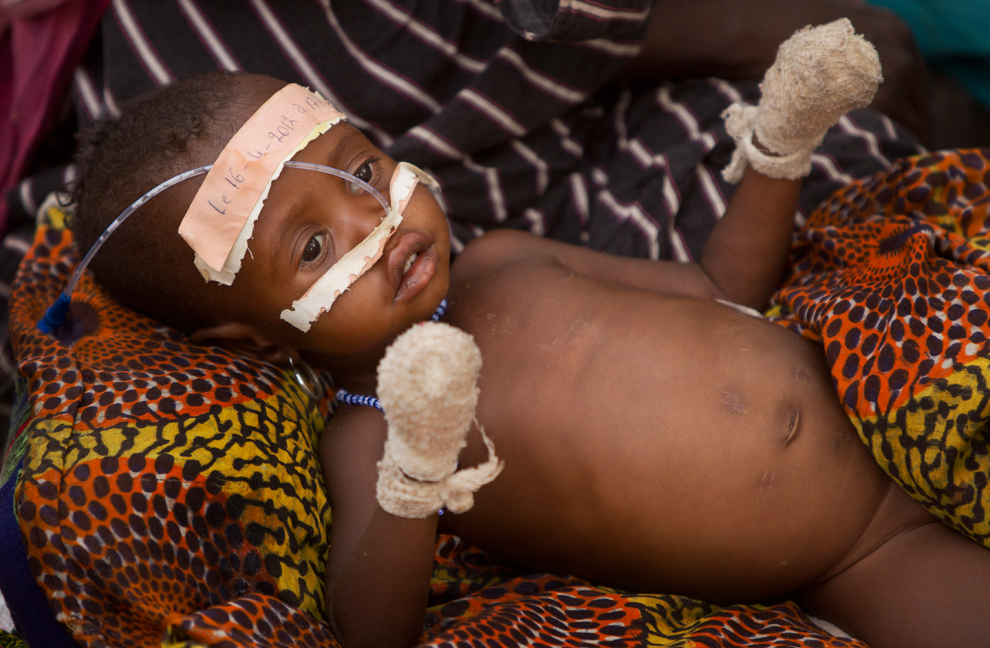
Nezile
Moussa, 2, receives treatment at the therapeutic nutrition ward of the
hospital in Mao, capital of the Kanem region of Chad, April 17, 2012. He
is one of an estimated 127,000 children under 5 years of age that
require lifesaving treatment for severe acute malnutrition. (Ben
Curtis/Associated Press)

Mother
Kouboura Adoum, and child, Nexile Moussa, 2, at the therapeutic
nutrition ward of the hospital in Mao, April 17, 2012. (Ben
Curtis/Associated Press)
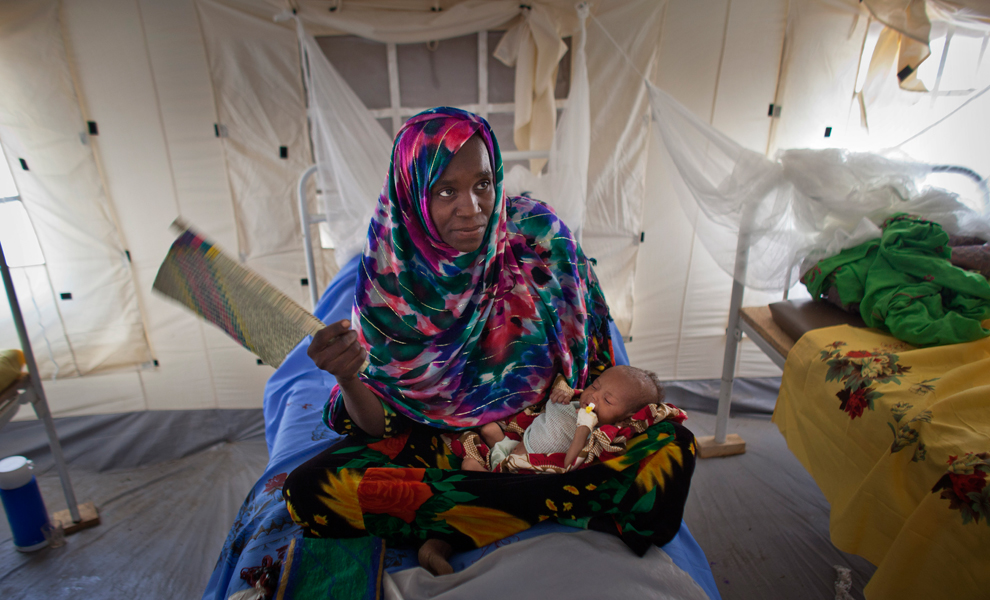
Mother
Fatime fans her daughter, Kouboura Ali, 8 months old, who is unable to
accept food orally due to a malnutrition-related illness, in the
stifling heat of an intensive care tent at the hospital in N'Gouri,
April 18, 2012. (Ben Curtis/Associated Press)
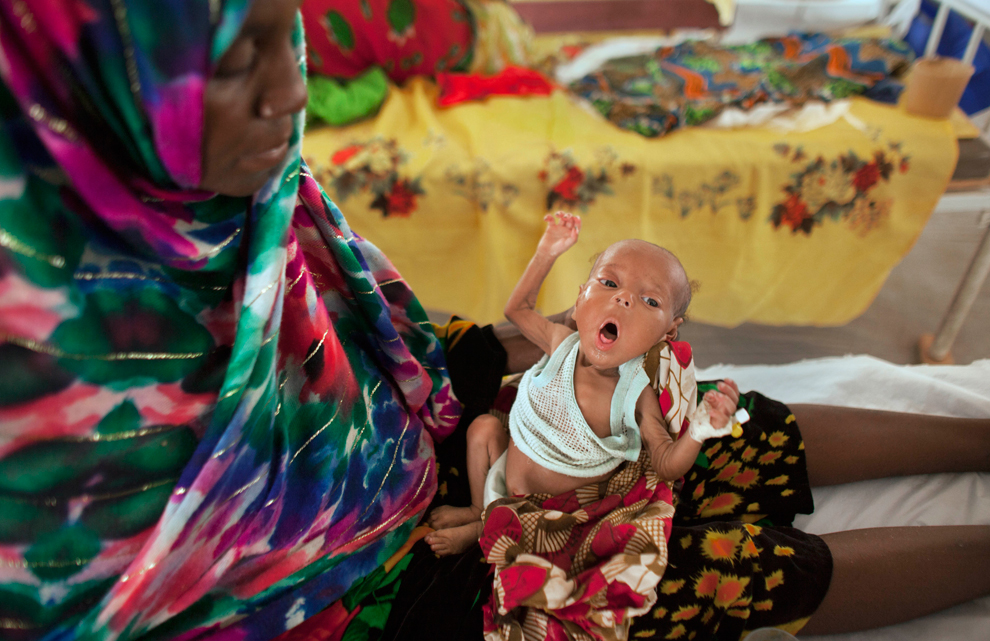
Kouboura
Ali, 8 months old, unable to accept food orally due to a
malnutrition-related illness, is one of an estimated127,000 children
under 5 years of age in Chad's Sahel belt that requires lifesaving
treatment. (Ben Curtis/Associated Press)
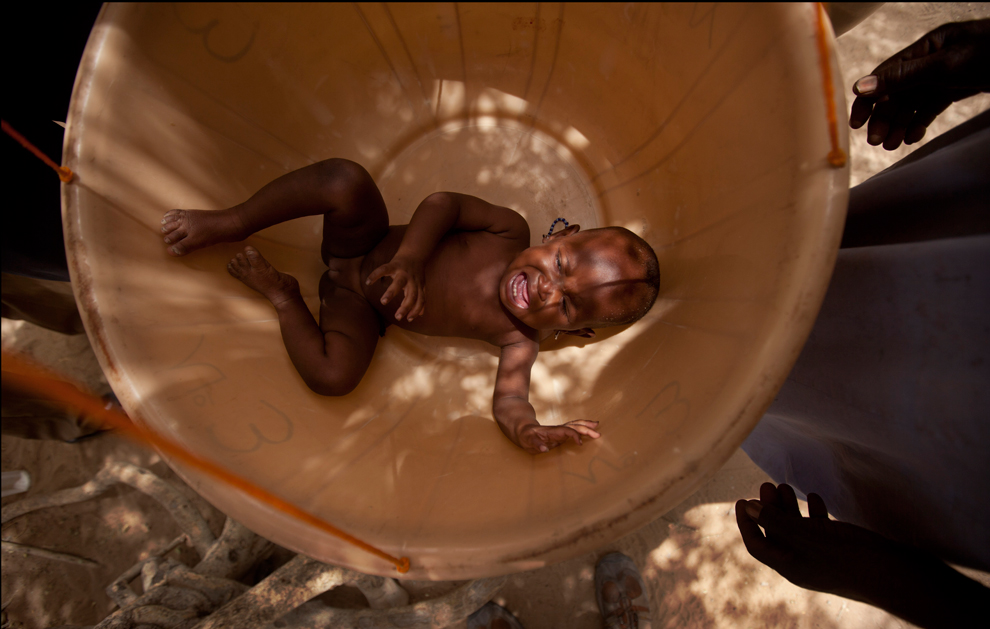
Halime
Ali, 13 months old, lies in the plastic bucket of a weighing scale
while being checked for signs of malnutrition at a walk-in feeding
center in Dibinindji, a desert village in the Sahel belt of Chad, April
18, 2012. (Ben Curtis/Associated Press)
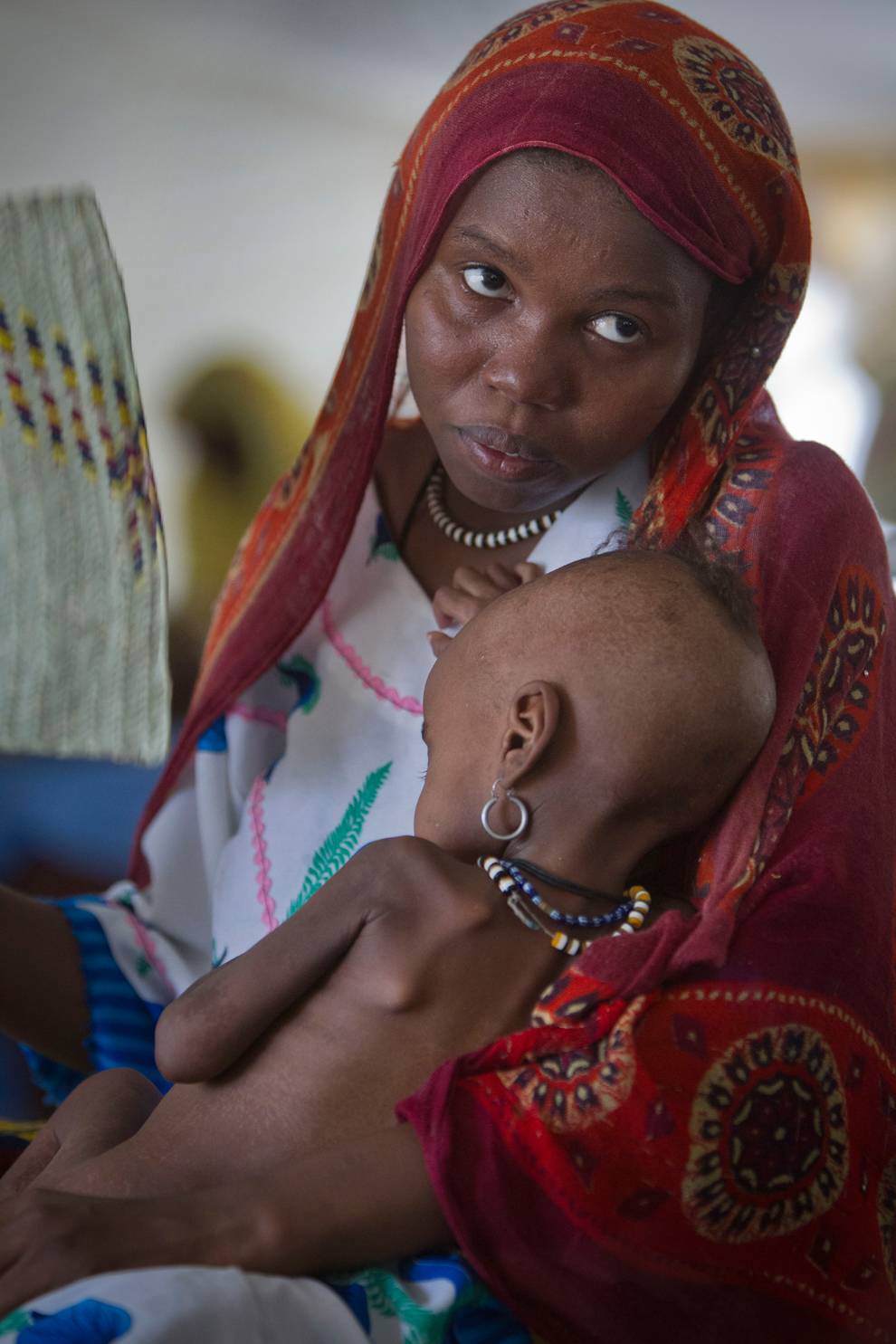
Hawa
Moussa, 2, who is suffering from malnutrition, is held by her mother in
N'Gouri, April 18, 2012. (Ben Curtis/Associated Press)
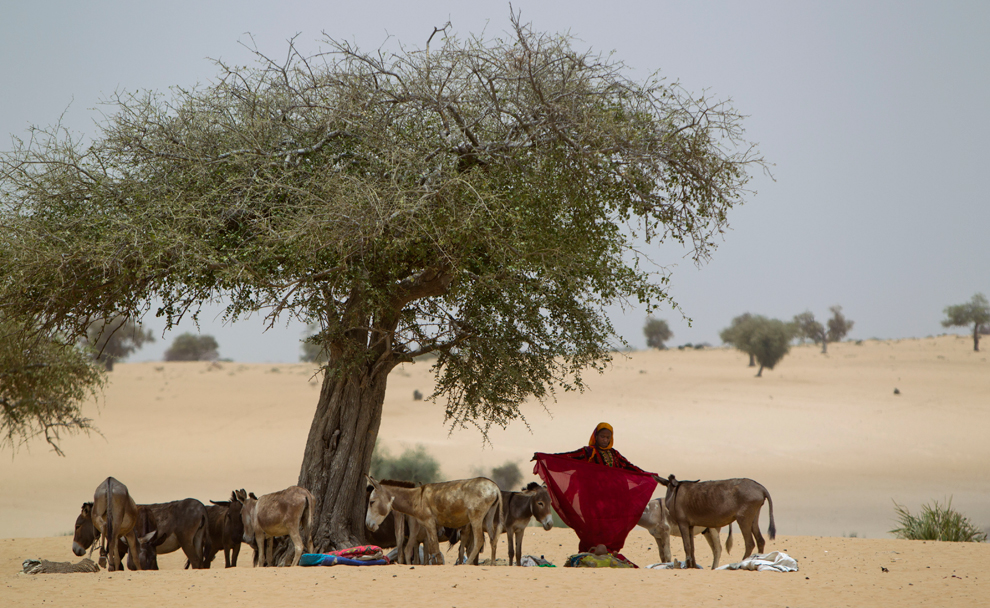
A
woman prepares her shawl as her baby lies on the ground. She arrived
by donkey to have the baby examined for signs of malnutrition at a
walk-in feeding center in Dibinindji, a desert village in the Sahel belt
of Chad, April 18, 2012. (Ben Curtis/Associated Press)
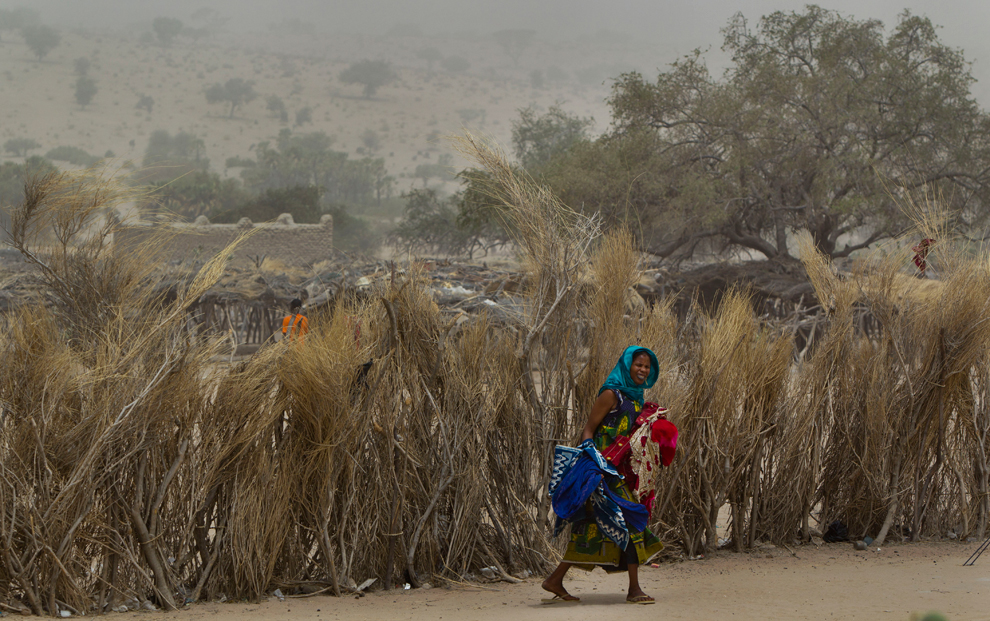
A
woman carries washed clothes away after allowing them to dry on a brush
fence in Mondo, a desert village in the Sahel belt of Chad, April 19,
2012. (Ben Curtis/Associated Press)
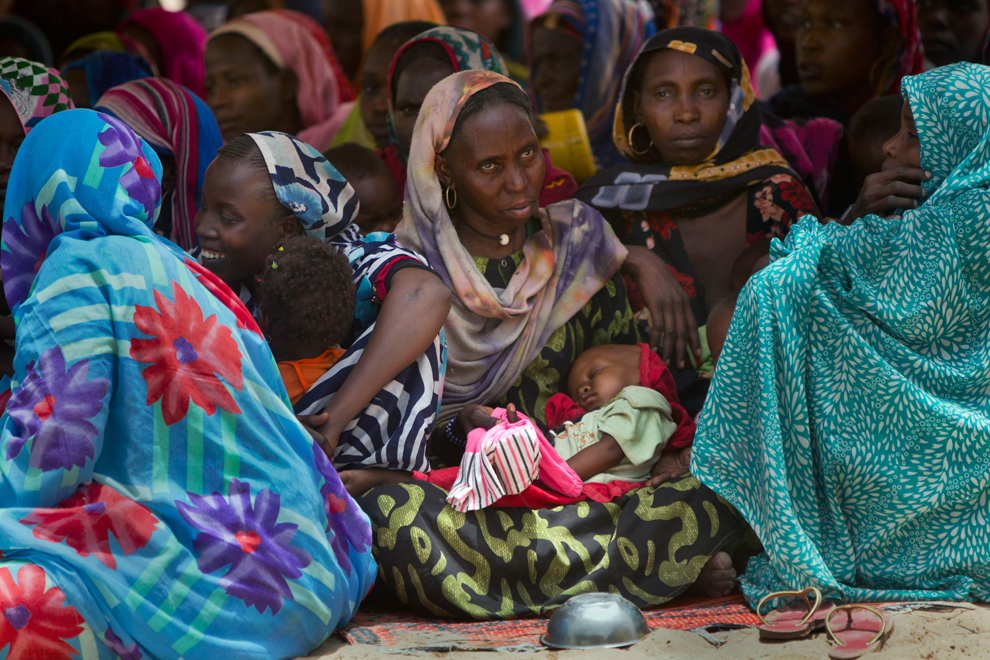
Women wait patiently to have their babies examined for signs of malnutrition, April 18, 2012. (Ben Curtis/Associated Press)
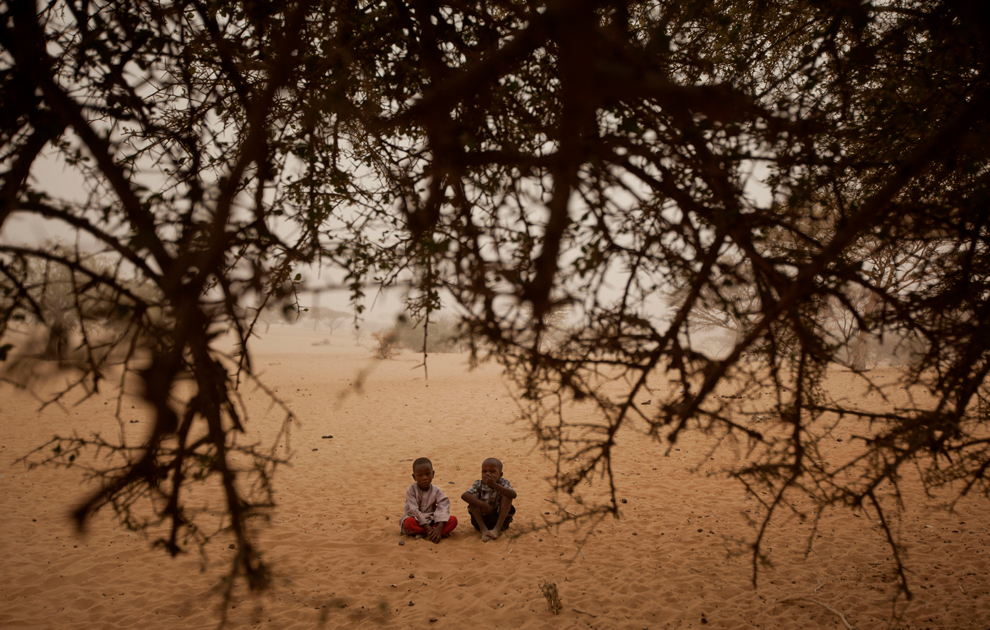
Two
Chadian boys sit on the sand together in Tchyllah, a desert village in
the Sahel belt of Chad, April 19, 2012. (Ben Curtis/Associated Press)
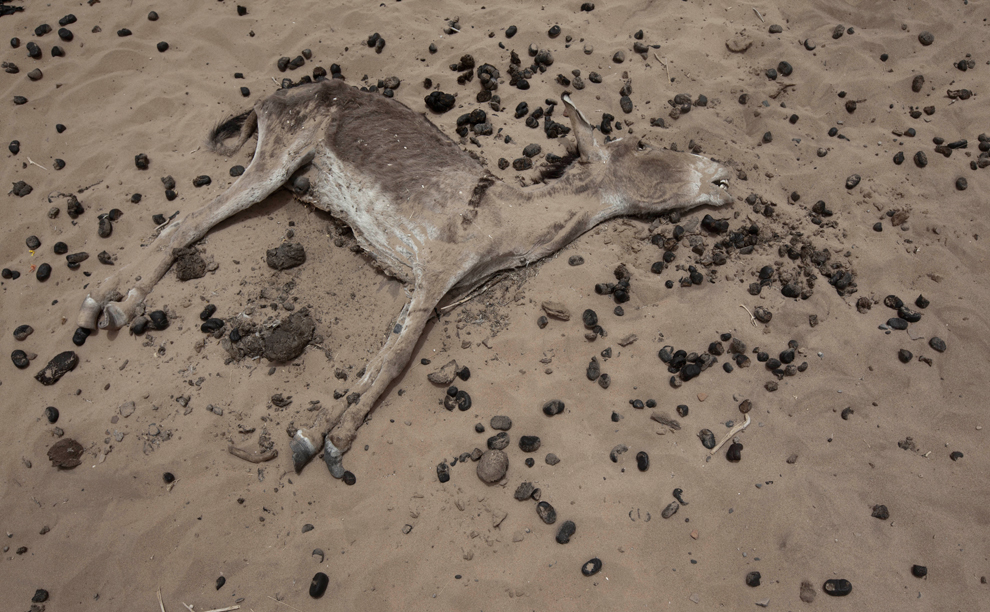
A
donkey carcass lies in an area of desert near the village of Dala in
the Sahel belt of Chad, April 20, 2012. Scarce rainfalls in 2011 caused
poor harvests, livestock production and all suffered from drought
conditions. (Ben Curtis/Associated Press)
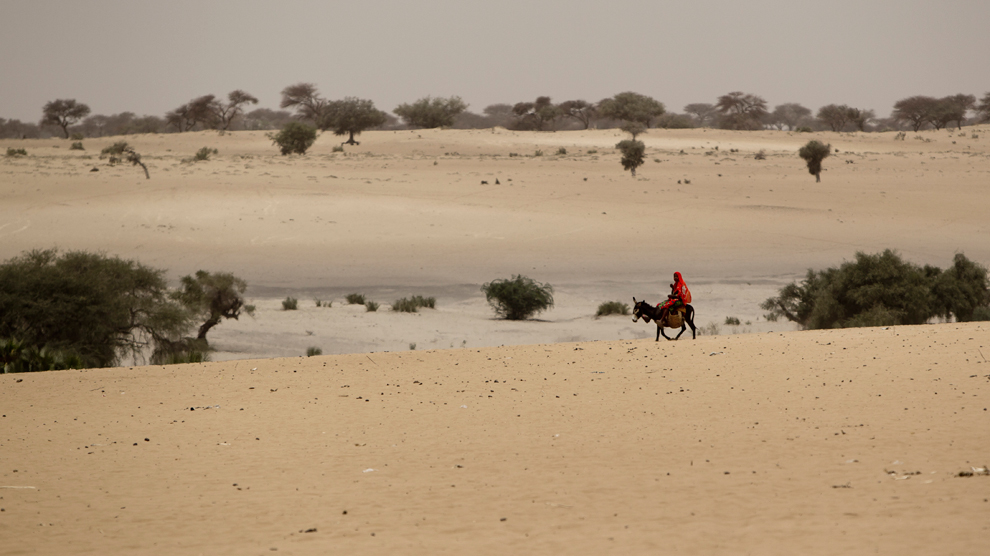
A
woman rides a donkey over sand-dunes in Dibinindji, a desert village in
the Sahel belt of Chad, April 18, 2012. (Ben Curtis/Associated Press)
Ricardo M Marcenaro - Facebook
Operative blogs of The Solitary Dog:
solitary dog sculptor:
http://byricardomarcenaro.blogspot.com
Solitary Dog Sculptor I:
http://byricardomarcenaroi.blogspot.com
Para:
comunicarse conmigo,
enviar materiales para publicar,
propuestas:
marcenaroescultor@gmail.com
For:
contact me,
submit materials for publication,
proposals:
marcenaroescultor@gmail.com
Diario La Nación
Argentina
Cuenta Comentarista en el Foro:
Capiscum
My blogs are an open house to all cultures, religions and countries. Be a follower if you like it, with this action you are building a new culture of tolerance, open mind and heart for peace, love and human respect.
Thanks :)
Mis blogs son una casa abierta a todas las culturas, religiones y países. Se un seguidor si quieres, con esta acción usted está construyendo una nueva cultura de la tolerancia, la mente y el corazón abiertos para la paz, el amor y el respeto humano.
Gracias :)


que impresionante ... dos realidades tan distinta.
Realmente hay que ser un inmenso cretino para hacer una propaganda nutricionista en un post como este. No lo elimino para tu vergüenza, la de tu compañía, y a quien sea que representes.
Tienes una sensibilidad que da asco.
Ricardo M Marcenaro